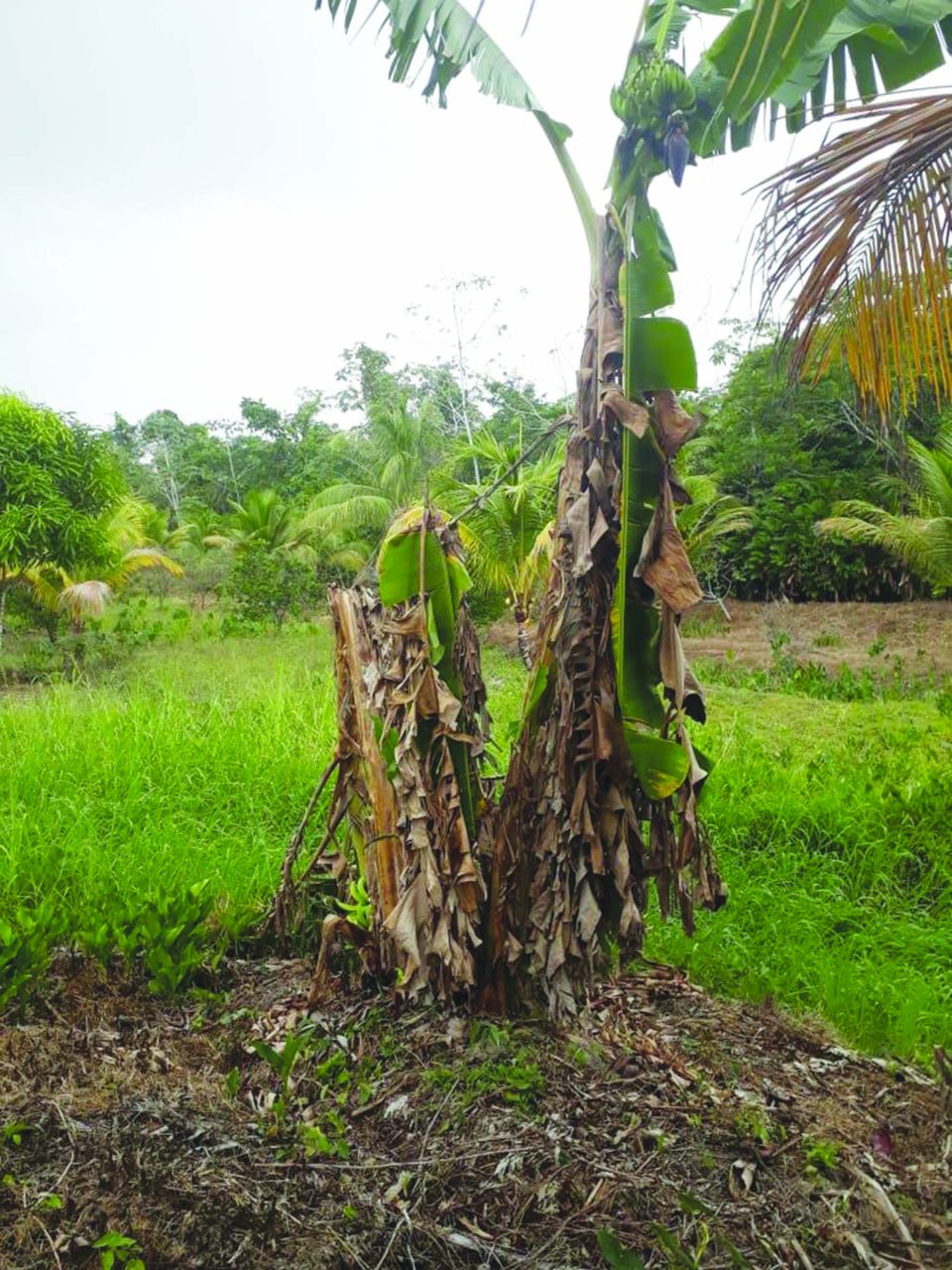Home News Essequibo River farmers fume over loss of income
…says diseases destroying crops
Farmers along the Essequibo River are expressing dissatisfaction over the loss of crops as a result of a disease killing their produce. This is resulting in a major loss of income for them which prevents them from being able to provide for their families.
 Famers are calling on the National Agriculture Research and Extension Institute (NAREI) to implement new technology to give much-needed assistance and guidance to farmers. Generally, there is a major shortage of plantain materials and as a result, the farmers have to settle for second class materials which is a main contributing factor to the diseases infesting their crops since there is no mechanism in place for properly detecting which of these materials are good and which are not.
Famers are calling on the National Agriculture Research and Extension Institute (NAREI) to implement new technology to give much-needed assistance and guidance to farmers. Generally, there is a major shortage of plantain materials and as a result, the farmers have to settle for second class materials which is a main contributing factor to the diseases infesting their crops since there is no mechanism in place for properly detecting which of these materials are good and which are not.
Agriculturalist Brijesh Singh, who carried out inspections on some of the farms in the Essequibo River, on Tuesday confirmed that there are three main common diseases affecting the farmers in those areas.
These include the leaf, which is affected by Black Sigatoka, the root, which has to battle Moca Disease and an issue with nematodes since farmers have difficulty identifying whether there are nematodes or just cockles eating the plants.
Singh said that the shortage of plantain materials is the main contributor to the issue since the farmers are forced to accept materials that may not be of an appropriate standard. Singh explained that enhanced technology by NAREI would assist in tackling such problems and made calls for them to reestablish a bio-diversity laboratory to conduct tissue culturing which would assist the farmers in determining which materials are viable and less susceptible to diseases.
“They are unable to gain advice on appropriate identification and control and as a result, they can’t identify these problems,” Singh said.
He added that there are no mechanisms in place by NAREI for inspection, quality control or certification, therefore, farmers are at risk of purchasing poor quality materials which are destroying their crops and source of income at large. He added that a biotechnologist laboratory at NAREI would offer much-needed guidance in dealing with such issues which are plaguing farmers countrywide. “NAREI doesn’t even have a biotechnologist. This is unacceptable. In a technologically advanced period, Guyana is behind. There is a need for specialised people in dealing with this and that is not being done. Enough is not being done by NAREI to improve on these things,” he said.
Over the weekend, farmers in Region Two (Pomeroon-Supenaam) made calls for the intervention of NAREI in trapping and bating the palm weevil, which is killing coconut trees in the region.
Singh, who carried out the inspection and discovered the palm weevil, said that it is associated with a nematode which causes the red ring virus of coconuts. Singh said that the farmers cultivate coconuts on a large-scale basis and supply businesses with thousands of coconuts per week and this plague is killing coconut trees.
Singh explained that after the trees started to die, the farmers solicited his help and he carried out a general inspection on a large farm at Waipotosi Island, Essequibo River, where he discovered a few dead coconut trees and dissected one of them and this is where he discovered the palm weevil.
More than ten farmers from Hubu backdam, Region Three (Essequibo Islands-West Demerara), are also experiencing the same issue with the plague killing their coconut trees.
 Famers are calling on the National Agriculture Research and Extension Institute (NAREI) to implement new technology to give much-needed assistance and guidance to farmers. Generally, there is a major shortage of plantain materials and as a result, the farmers have to settle for second class materials which is a main contributing factor to the diseases infesting their crops since there is no mechanism in place for properly detecting which of these materials are good and which are not.
Famers are calling on the National Agriculture Research and Extension Institute (NAREI) to implement new technology to give much-needed assistance and guidance to farmers. Generally, there is a major shortage of plantain materials and as a result, the farmers have to settle for second class materials which is a main contributing factor to the diseases infesting their crops since there is no mechanism in place for properly detecting which of these materials are good and which are not.